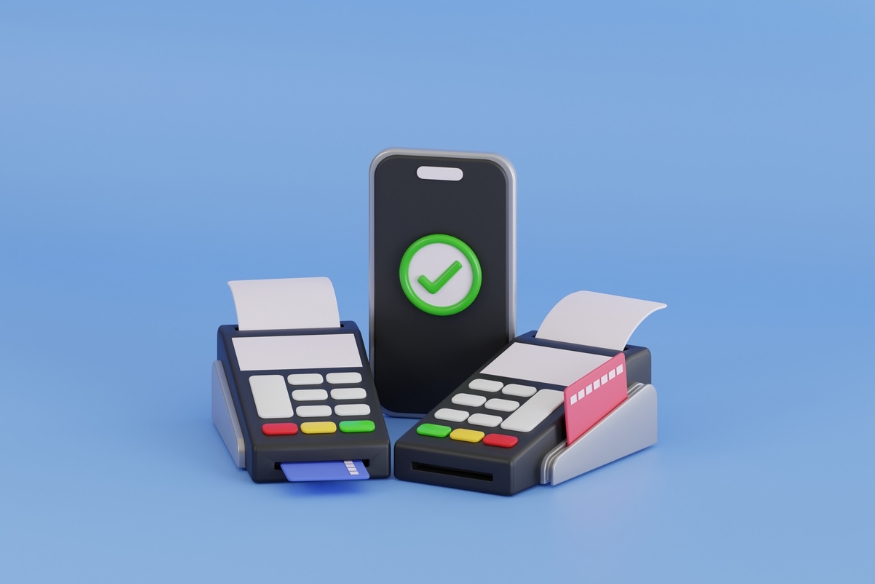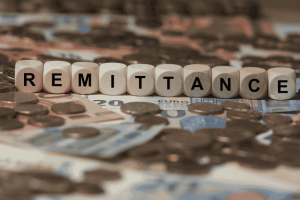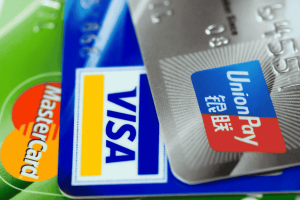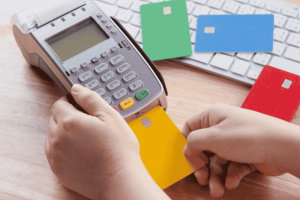Do you ever feel overwhelmed juggling several bank accounts? Whether you’re separating personal and business finances, saving for different goals, or taking advantage of various banking perks, managing multiple accounts can get complicated fast. But with the right strategies, you can turn this challenge into a powerful tool for financial control and growth.
Ready to take charge of your accounts and make your money work smarter? Let’s dive into practical, easy-to-follow tips for managing multiple bank accounts efficiently—so you can enjoy all the benefits without the stress.
Why Have Multiple Bank Accounts?

Before we get into the “how,” let’s talk about the “why.” There are plenty of good reasons to maintain more than one bank account:
- Budgeting: Allocate funds for specific purposes (e.g., bills, savings, travel).
- Maximizing interest: Take advantage of different banks’ rates or promotions.
- Access and convenience: Use different banks for local and international needs.
- Business vs. personal: Keep your business and personal finances separate for easier tracking and tax reporting.
- Emergency backup: Have a backup account in case one is compromised or inaccessible.
The Challenges of Managing Multiple Accounts
Having multiple bank accounts can be a smart financial move—helping you separate savings from spending, manage different currencies, or organize your finances by goal. But without good systems in place, it can also become overwhelming. Here are some common pitfalls:
Common Challenges
- Forgetting login details or PINs
With multiple accounts come multiple passwords and security credentials. Without a secure system to manage them, it’s easy to get locked out or delay important transactions. - Missing minimum balance requirements
Some accounts charge maintenance fees if you don’t meet minimum balance thresholds. Forgetting this can lead to unnecessary costs. - Overlooking transactions or missing payments
When money is moving across accounts, it’s easy to lose track of automated payments or low balances—leading to overdrafts or failed payments. - Losing track of where your money is
Spreading your funds across various accounts without clear tracking can make it harder to get a full picture of your financial health.
The Good News? These Challenges Are Easy to Fix
With a few smart habits—like using budgeting apps, setting alerts, and doing regular check-ins—you can stay on top of all your accounts and enjoy the benefits of a more organized financial life.
Want help creating a simple system to manage your accounts efficiently? I can help with that too.
Top Tips for Managing Multiple Bank Accounts
Having several bank accounts can bring structure to your finances—as long as you stay organized. These practical strategies will help you manage everything with confidence and clarity.
1. Assign a Purpose to Each Account
Instead of juggling accounts randomly, give each one a specific role. This helps you stay focused and prevents overspending.
| Account Type | Suggested Use |
|---|---|
| Main Account | Salary deposits, daily spending, bill payments |
| Savings Account | Emergency fund, long-term goals (e.g. home, car) |
| Travel Account | Budgeting for vacations or overseas spending |
| Business Account | Side hustle income, freelancer payments, expenses |
When each account has a job, you know exactly where your money should go—and you’re less likely to dip into savings accidentally.
2. Use Digital Tools and Apps
Technology can take the stress out of managing multiple accounts:
- Banking apps: Most banks offer mobile apps that let you track balances, make quick transfers, and set alerts in real time.
- Personal finance apps: Tools like Mint, YNAB (You Need a Budget), Revolut, or Spendee let you link all your accounts in one place and visualize your finances through charts and categories.
- Spreadsheets: Prefer manual control? Set up a simple tracker in Excel or Google Sheets to monitor balances, set goals, and review trends.
Pro Tip: Turn on notifications for things like low balances, large withdrawals, and upcoming payments. These alerts act like a financial early-warning system.
3. Automate Transfers and Payments

Automation is one of the easiest ways to stay in control of your finances. By setting up recurring transfers, you remove the need to remember dates or manually move funds each month. Here’s how to make it work for you:
Common transfers to automate:
- Savings contributions
Allocate a fixed amount to be moved to your savings account as soon as your salary is deposited. This ensures that you’re building your emergency fund or savings goals without relying on willpower. - Bill payments
Automate payments for rent, utilities, subscriptions, or insurance. This not only saves time but also helps you avoid late fees and service interruptions. - Loan repayments
Setting up automatic debt payments (like for credit cards, student loans, or mortgages) keeps your credit score healthy and helps you stay on track with repayment schedules.
Why automation helps:
- Consistency: Your savings and payments happen on time, every time.
- Peace of mind: You won’t have to stress about due dates or overdrafts.
- Efficiency: It reduces the need to log in frequently or make last-minute decisions.
Pro Tip: Align transfer dates with your income cycle (e.g., the day after payday) to make sure your account always has sufficient funds when the transfer goes through.
4. Keep Track of Minimum Balances and Account Fees
Every account comes with its own conditions—some require a minimum balance to avoid monthly fees, while others may limit free ATM withdrawals. If you don’t stay aware of these, you could lose money through unnecessary charges.
A simple table like the one below can help you stay organized and informed:
| Account Name | Min. Balance | Monthly Fee | Free Withdrawals | Notes |
|---|---|---|---|---|
| Main Bank | $500 | $0 | 4 | Salary credited monthly |
| Savings | $1,000 | $2 | 2 | Higher interest; long-term savings |
| Travel | $0 | $0 | Unlimited | Linked to travel card and e-wallet |
| Business | $300 | $5 | 3 | Freelance/project income management |
How to use it:
- Check monthly: Make reviewing this table part of your monthly financial check-in. Update any changes in fees, limits, or usage.
- Use alerts: Many banking apps let you set balance alerts to warn you when you’re nearing the minimum or approaching withdrawal limits.
- Consolidate if needed: If an account no longer adds value or becomes too costly, consider closing it or combining it with another account.
By automating the movement of your money and keeping tabs on account rules, you make your financial system work for you—not the other way around.
Want a customizable template for tracking your accounts or setting up transfer schedules? Just say the word—I’ll build one for you.
5. Consolidate Where It Makes Sense
Having too many accounts can be more of a burden than a benefit. If an account is sitting unused, costing you fees, or duplicating a function another account already fulfills, it may be time to close it. The goal isn’t to have more accounts—it’s to have the right ones.
When to consider consolidation:
- The account hasn’t been used in over 3 months.
- You’re paying maintenance or inactivity fees.
- Its purpose overlaps with another active account.
Benefits of consolidation:
- Fewer passwords and logins to manage.
- Lower risk of missing payments or fees.
- A clearer, more focused view of your financial setup.
Always check for automatic payments or incoming deposits before closing any account. Be sure to get written confirmation of closure to avoid future surprises.
6. Strengthen Your Security Practice
Managing multiple accounts increases your exposure to digital threats. It’s essential to maintain strong, unique security protocols across all platforms. Here’s how:
| Area | What You Should Do |
|---|---|
| Passwords | Use a different, complex password for every account. |
| Two-Factor Authentication (2FA) | Enable it wherever available. Adds a second layer of security. |
| Password Management | Use a reputable password manager like 1Password or Bitwarden. |
| Suspicious Activity | Regularly check login history and revoke unknown devices. |
Think of your bank accounts like locked rooms. Using the same key for all of them puts everything at risk. Diversify your security strategy and keep your digital doors reinforced.
7. Monitor Accounts Weekly: A Small Habit with Big Payoff
Even with automation in place, regular check-ins help you stay ahead of problems. Make it a habit to review your accounts once a week—this simple practice can prevent overlooked fees, detect fraud early, and ensure everything runs as intended.
Weekly review checklist:
- Check balances across all active accounts.
- Confirm that scheduled transfers have occurred.
- Look for duplicate or suspicious transactions.
- Note any inactivity on less-used accounts.
- Update any missing documentation or ID verifications.
Use a spreadsheet, notebook, or finance app to document your findings. Setting a weekly calendar reminder can help turn this into a sustainable routine.
8. Label Your Accounts for Clarity and Control
One of the most effective ways to reduce confusion is to give each account a clear name and role. If your bank or app allows it, assign nicknames that reflect the account’s function.
Examples of helpful labels:
- “Emergency Fund”
- “Monthly Bills”
- “Travel Expenses”
- “Freelance Income”
- “Tax Withholding”
These names act as visual anchors. They remind you of each account’s purpose and reduce the chance of accidentally moving or spending funds intended for something else. In some banking apps, you can even create sub-accounts or digital “jars” to separate funds visually.
9. Get Ready for Tax Time Throughout the Year
If you use multiple accounts for business, investments, or savings with interest earnings, tax season can become overwhelming—unless you stay organized year-round.
Here’s what you should track:
- All income (salary, freelance, dividends).
- Interest earned from savings or fixed income accounts.
- Business-related expenses and account activity.
- Transfers between personal and business accounts.
- Fees or services that may be tax-deductible.
Set up a digital folder labeled “Tax Documents [Year]” and add to it monthly. Many banks allow you to download annual account summaries or tax reports—just don’t wait until April to do it. Keeping these records updated makes filing smoother and reduces the risk of errors or fines.
10. Stay Informed About Your Account Benefits
Many people miss out on valuable features simply because they don’t know what their bank currently offers—or what competitors are doing better.
Banks update products and terms regularly, sometimes quietly. That “basic” account you opened two years ago may now have a cashback option, higher savings interest, or fee-free international transfers—but unless you’re actively checking, you’ll never know.
Likewise, if your current bank has stopped evolving or offers lackluster customer support, there’s no reason to stay loyal. Switching banks today is easier than ever and often comes with welcome perks.
Take ten minutes every couple of months to explore your bank’s website or app. Browse the “news,” “updates,” or “products” section. If you’re not sure what benefits you’re entitled to, send a quick message to customer service asking, “Am I on the best plan for my needs?” Also consider comparison tools or financial blogs that rank and review account options—especially if you’re managing money across personal, business, or international channels.
Common Mistakes to Avoid
Many people overlook dormant accounts, which can lead to fees or even account closure if left inactive. It’s important to review all your accounts regularly and close those you no longer use. Having too many accounts can also complicate your finances, making it harder to track spending and payments. Keeping a simple setup with only the accounts you truly need is more effective.
Security is another common pitfall. Using the same passwords across accounts or skipping two-factor authentication puts your finances at risk. Always use strong, unique passwords and enable 2FA to protect yourself. Finally, don’t forget to regularly check your accounts for better interest rates or rewards, as banks often update their offerings. Staying informed helps you maximize your benefits and avoid unnecessary costs.
Conclusion: Make Multiple Accounts Work for You

Managing multiple bank accounts doesn’t have to be stressful. With a clear plan, the right tools, and regular check-ins, you can enjoy the flexibility, security, and benefits that come with a well-organized financial system.
Ready to streamline your accounts? Start by reviewing your current setup, assigning clear purposes, and automating your finances. If you have tips or questions about managing multiple accounts, share them in the comments below—your experience could help others master their money too!
And if you found this guide helpful, don’t forget to share it with friends and family. Let’s make financial management simple and stress-free for everyone!









